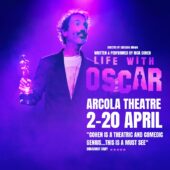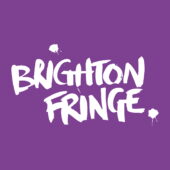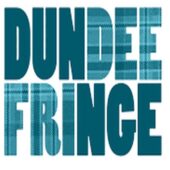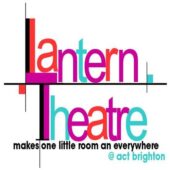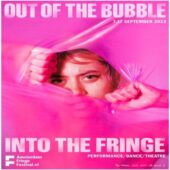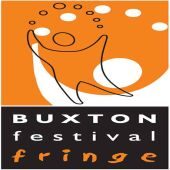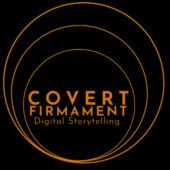
We welcome Ross Drury from Living Record who shares his reflections on bringing Thrown by Jodi Gray to the Edinburgh Fringe 2018…
Theatre Whispered In Your Ear: Emma Plotkin talks to Ross Drury about Thrown by Jodi Gray
A Fringe Trauma
The Edinburgh Fringe Festival is shit.
Don’t believe the photographs of colourful hoards of people on the mile. The hoards of Zombie student chancers and failed mid stage theatre makers is not a positive sight. Its the sight of whooping drunk crowds and loud sub woofer fringe shows that are determined to hypnotize their audiences into entertainment through LOUD NOISES and subsequently ruin your show. This noise hemorrhaging play hating month long observational comedy club has fallen so far from where it began that even its pop up prosecco bars and six pound pints can’t save it from surely becoming Europe’s largest and most pointless Arts Festival.
…is what I feel and I suspect many others feel when they’ve caught Fringe Trauma. Den den daaaaaaaaa
I was sat in a venue just yesterday watching a lad having something of near panic attack over his last performance. He was describing a performance in an adjacent space blurting the song ‘Panic at The Disco’ through his play that was not designed to have ‘Panic At The Disco’ played through it. He was visibly upset and his colleague was consoling him telling him that it was same for everybody and not to worry about it.
Its the same for everybody so not to worry about it
Its the same for everybody so not to worry about it
Its the same for everybody so not to worry about it
A Fringe Trauma is what happens to us all in the first few performances of the festival. Its because that in these performances you will learn what your lot is. When will the noise come in? Will the tornado of noise tear up the roof. When will the young local male ironically stride through the corridors pissing up the walls looking to reclaim lost territory from the annual festival which started thirty years before his birth. When the reality of the £15,000 roll of the dice sets in and you become aware that your the unluckiest show at the Fringe that the tight grip of Fringe Trauma begins.
Fringe Trauma like most trauma is built on a legacy of events. Like the time you payed £5,000 to have your play staged underneath a night club called Espinage – I’ll never forget that free fringe comedians third gag about electrical appliances or when ‘ Girls just want to have fun ‘ underscored your eye couging scene. Yes i’m the guy who brings eye couging scenes to the fringe. It all builds towards the desperate vacant stare into the ceiling as you pray to the fringe gods of the seventies to save you before the first get in. ‘ Help me John Calder. Help me ‘.
I spoke earlier in this blog about ‘The Vacuum’ and this for me has a part to play in the Trauma many of us feel. When you’re here tumbling into void and rollerdexing through conspiracy theories to sell a show with the sole purpose of doing just that, its very easy to lose perspective on the world and allow the narcissism of putting on a play to create genuine anxiety. But you know…
Its the same for everybody so not to worry about it.
What is most strange to me is how Fringe Trauma has a habit of becoming something of an insidiously fond memory. The maddening joker grin on a train home HAHAHAHAHAAHAHA ‘do you remember do you remember mate. DO you?! You know when your self esteem dropped and you convinced yourself that you were cursed to fail. HAH When you wasted your money and time/ AHAHAHAHAAAHAHAHAAHAHAHA…WHEN THE OPERA ACT WARMED NEXT DOOOR – WHEN THE BAND OUTSIDE THE BRASS BAND PLAYED THREE LIONS ON A SHIRT- WHEN WHEN…WHEN THEY PROGRAMMED DRUM AND BASS THE MUSICAL DIRECTLY ABOVE YOUR SHOW’. HAHAHAHAHA. I heart the fringe.
I do wonder however if Fringe Trauma is exactly why we all keep coming back. Perhaps its the addictive crushing lows of the middle class underdog. Y’know that time you were really up against it and didn’t die. Underdogs. Whether you were bullied at school, a failed sportsman or mummy didn’t want you to do performing arts someone somewhere has put you down mr theatre maker and here you are compelled and addicted towards a festival that confirms your imminent failure. But what if you proved everyone wrong? What if you made it? What if you did a Leicester City? What if?
What then?
Thrown Stories Are Everywhere
When was the moment you realised your childhood had ended?
A Thrown story is a memory. A moment where you were thrown into the fallible world of Adulthood. A transitional life changing memory that you set you on the path to who you are today. It’s something that has come to fascinate me this past year. (It may have had helped me make a good play but I don’t really know that yet).
I set out thinking that a Thrown story would happen young and only once but I have since discovered that ‘Throwness’ is an event that reoccurs in one’s life. Memories that pinpoint a widening consciousness about the world around us as we perceive our present self as the grown up version. What series of memories made you into that grown version? What changed? Why? Childhood doesn’t necessarily end when you’re nine. I can look back at moments when I was 23 and say…’what a kid’!
Right now I’m caught in that play psychosis, where your brain contours everything around you to the themes of your theatre piece. I know, I lead a really tough life. Have you ever been there? Its possibly the most self indulgent state of mind available to a human being and so languorously pointless that it often alienates you from everyone you know. In my case – as many housemates of mine have pointed out- I lose the function to have normal conversations. Welcome to a pink fold inside a fringe festival brain. Relevant. Important. Cutting edge. Is anyone reading this anyway or is this just one cog in the wheel of my maddening laments of being at the Fringe Festival. But anyway… I’m seeing and hearing Thrown stories everywhere. That’s normal right? Yeh it’s normal. Says myself to myself.
Just this morning an American spoke to me about the time she moved from a small town to New York and how this changed her perception of her character. And then another person started with something else about that Dad being strict on them and then another and another. I’m being Thrown from one Thrown story to another. If you don’t believe me please listen to a conversation I had with a lady called Anna Thomas who speaks about her show – How To Drink Wine Like a Wanker. In our conversation she talks about a life changing moment that causes her to abandoned the robotic corporate world and join the real humans ( Artists ) . Sounds like a Thrown story to me….
* Please do try and see Anna. My hunch is that we’re looking at a gem and her highly acclaimed show is certainly one to look out for.
A Vino Solo Story: Ross Drury talks to Anna Thomas about How to Drink Wine Like a Wanker
Fringe Bog
The first time i met Paul Levy and Fringe Review was many years ago for an interview for a production of Private Lives i had directed at The Brighton Fringe. I was a scruffy wee lad ripely plucked from East 15 and a bit of time spent assisting at The Southwark Playhouse with Alfred’s book for Directors: Different Every Night tucked under my arm. The perfect portrait of the aptly named ‘ emerging’ Director. I’ve always wondered when i might be able to fully emerge and what horrid shackles of slime would be hanging off me when i did thanks to my time spent at Fringe Festivals. I have since learnt that directing plays at the fringe can cause you to swim around in the bogs of society with fifty pence in your pocket and shattered dreams. More on that later. Anyway, this interview for Private Lives was my first fringe festival and a few months later I took my first play to the Edinburgh Fringe Festival, a kitchen sink drama about someone turning into a cow, The Cow Play.
I’ve always avoided writing any blogs or doing any reviewing mainly because all i ever want to do is make shows and i’m useless at everything else. And to be honest as an extreme dyslexic writing stuff in the public domain is to me what alligators are to Captain Hook and i’m convinced this blog will swallow me whole. I’ve twisted my own arm this year mainly because i am utterly perplexed and frankly appalled by my decision to come back to the fringe and its caused me to wonder what on earth is wrong with me. Why would I take my work to this corporate cess pool where plays go to die? Why would i endure yet again the nasty claws of thumping noise bleed bullying my work into submission? Why oh why would i agree to a tech rehearsal that is only three minutes long. And why would i take a walk down the mile and smother myself in the flyering crowds of shows that only serve as a mirror reflection of my pathetic desperation?
I have this fun thing I look out for every time i come here. I call it the Fringe Vacuum. The Fringe Vacuum is where conversations go every time somebody tries to talk about the Fringe and how to do it well and what it’s all about. Fringe participants, including myself, will naturally muse on the best way to get audiences and go on and on about what audiences want etc etc bla bla. everyone says ‘oh this is the last year of comedy’…’ flyerings dead you need to online adverts’…’stand outside venues’ ‘radio’ ‘ stars dont matter anymore’ ‘ make friends with other shows’ ‘ paint things on walls’ STICKERS’. Statistics come out that tell audience numbers are lower, higher or the same and yet it all looks the same…or does it? The moment you start that fringe theory chat with someone it all just becomes a dizzying kaleidoscope of illusory conspiracy theories and eventually all your really doing is blaring white noise into the vacuum for hours each other for hours. BLAAAAA BLLLAAAA BLLAAAA
My show this year is called Thrown and among other things it has a similarly bamboozling exploration – consciousness. That invisible, magical and impossible thing that might just be inside the pink bits of your brain. Its a little bit about that. This blog will look at two things i think…it is a bit of a dive into the unanswerable world of The Fringe Festival Brain and my swirling head spinning binaural play By Jodi Gray. I might try and mash the two together perhaps. I don’t really know yet. How can anyone ever really know anything when you’ve made spent months making something pretend and you’ve come to this festival, this carnival of people all swept up in collective psychosis of illusory things. Welcome to The Edinburgh Fringe Festival. Where nothing is everything and their’s no way of doing anything. Please find below the first splash from the swamp of my fringe bog.
WHY BINAURAL?
Thrown is performed using Binaural sound technology which essentially is centered around a microphone shaped like a human head. Audiences wear headphones.It can feel like your sitting in the centre of the stage as sound moves around you. Something like that…
People are always asking me why we came to this idea and why we’re using it – so i thought i would attempt to describe how and why this happened.
.
The binaural technology for us started with a discussion between myself and Jill Rutland about our childhoods. We both felt that there were pivotal moments in our lives where our childhoods had ended. We started by writing letters to each other about our memories and tried to find the thread of these experiences and how this might have shaped our choices or character in ‘adult’ life. We went back and forth on this for few months and it was quite an emotional experience I think to do this. We then started to talk to other people we knew about it and it became clear to us that lots of other people had similar reflections on their past and I guess like a lot of theatre makers we bottled all these chats up and thought we might have an idea for a play.
It was at this point that I started to wonder how I might approach staging memory and the most effective way to capture memory as a theatrical experience. It would have been easy for us to work on tools like flashbacks and this that or the other, but our principal discovery that we sort of stumbled upon was that these pivotal moments of childhood were a shared experience regardless of time, circumstance and culture. A sort of universal experience of growing up. It was along this thinking that I realised that we needed our audiences to be inside their own heads, or to be situated inside their consciousness or the consciousness of other characters.In my research about my memory I had also discovered that the experience of recollecting traumas or vivid recollections from childhood is sensory and often triggered from something like a smell or a sound. So y’know…headphones came into the equation. I wasn’t satisfied that a normal staging of a play would be the theatrically cleanest way of bringing audiences into this idea and it seemed to me at least, like an effective way of exploring sense memory and giving the audiences a theatrical experience of memory.
It’s not really like me to make a self-confessional autobiographical piece of theatre and we decided to take our notion of ‘throwness’ and share this with others and hear what they thought about it. Through workshops we started collecting memories for lots of different groups, principally older people, and we talked to them about their childhood and what made them who they were. This was an exciting time as we came across common threads between the people we spoke to. Things like responsibility, parental fallibility, loneliness and a loss of innocence. It wasn’t all bad. Some people had incredibly joyous stories about realising their potential or a feeling of freedom. To put it simply we were interested in putting these together in some sort of theatrical kaleidoscope.
It was around this time I came across the idea of a ‘flashbulb’ memory. A flashbulb memory is when somebody tells you a memory of their own and you imagine it with almost a dreamlike fevour, abstracting and giving poetry to what you have heard within your own imagination. Flashbulb memories are something that I think underpins a lot of our production because principally audiences are being asked to listen, watch and experience the memories of somebody else. Binaural technology just became the most appropriate way to achieve all the above. I think I fell for it as a director because I can create expansive, poetic landscapes with just about as many characters as I like and all I need is an actor, a microphone and a sound designer. It’s a lot more maddening and complicated than that but I really believe this is the potential of working in this way.
This kind of theatrical pragmatism is very freeing for a director who has mainly worked on the fringe – I am no longer inhibited by a lack of resources to communicate experiences or ideas, and because the technology is in the rehearsal room from day one of rehearsals you are working with the total effect of the production from the very beginning. I have often found, in the fringe, that you can spend weeks in the rehearsal room creating something special only to see it ruined and changed by the venue or space you are working in. Or perhaps a tech time that lasts ten minutes and sees you make insane and rushed decisions that spoil just about everything your actors are doing. Working with Binaural technology avoids all that. Before you walk into the theatre you have developed and can control the total effect of the experience and I have found this hugely exciting because I am able to maintain the experience for my audiences and offer clearer guidance to an actor.
Has it been easy? Hell no! It’s actually very noble of me to claim that I can maintain the experience of the play, in theory this is true but the major challenge I found making this show was that I had re-program just about everything I knew about theatre! This sounds dramatic, so I’ll explain. When you’re putting on a let’s say… a ‘normal’ play (using normal for ease)… you’re generally, although not exclusively, looking to develop either a connection between the actor and audiences like with direct interaction in a Shakespeare play, or tap into the collective experience of audience as a whole with a fourth wall with audiences placed close together in one auditorium. The thing with putting audiences in headphones is that these two very important components of theatricality are not available to you. Thrown is our is Frankenstein’s monster of a third option and is I hope, very much its own thing.
So as soon I started putting headphones on I literally had no idea what I was shooting for in terms actual effect for the audience or even how to approach making it. So, what to do? Well in my case it took quite a lot of mis-fires, particularly in preview performances with lots of trial and error. However, with each performance I learnt a little bit more about what it was doing and could do as a piece of theatre. What’s interesting about binaural theatre is that it swaps everything around, sound is your major storyteller with text as an underscore, how many shows have you seen with pianos playing underneath dialogue. In a binaural play the sound is your protagonist and the staging visua/textual devices is your underscore, this by the way becomes a beautiful tapestry between what is seen and heard tapping into what is felt, unconscious and experiential – Binaural theatre is very hard to put into words, partly because its built out of sound.At the end of the day underneath all the fluff that makes shows and the chat about technology, the people we spoke to made a great impression on us and the binaural technology has allowed us to put their memories into poetry. I think this piece captures a kind of intimacy with audiences that I have not seen before. And perhaps at the end of it all when our audiences have sat with the memories of Constance Ellis they might think about their own thrown story, or as Constance says, ‘the thread running through the life that binds the story together’.
And then maybe they’ll do what me and Jill did nearly year ago and tell their best friend about it….
Righto. That’s my first attempt. Time to wipe off the slime and ill come back tomorrow with something else from the pink folds of the fringe brain…
